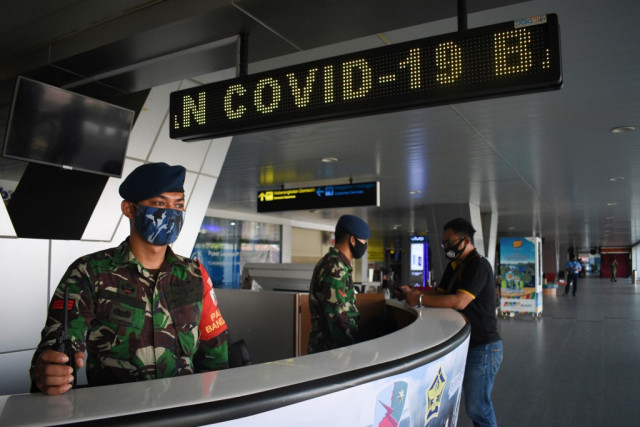Ukraine-born Lim Roma Revives Siem Reap Tourism Through Photography
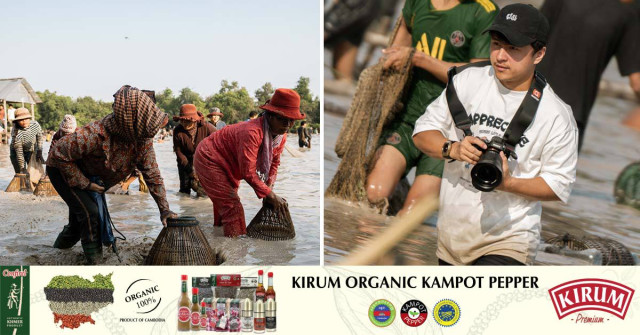
- By Meng Seavmey
- February 26, 2024 7:00 PM
PHNOM PENH – Ukrainian-Cambodian freelance photographer Lim Roma has embarked on a personal mission to counter bad reviews of Siem Reap tourism and help restore its fortunes to pre-COVID levels.
“I have read many articles saying terrible things about their experience in the province,” he said.
“I’ve been living here so I know the most reviews were false. The COVID-19 outbreak hit hard on business owners, including my friends.
“This is why I took parts in featuring the beauty of the province to revive the tourism sector.”
Roma, also an English teacher, invests all his available time in photography. His work to revive tourism have been recognized by the public, local authorities, and the Ministry of Tourism and led to provincial authorities inviting him to the city.
Learn temples’ history from each photograph
Roma’s focus in Siem Reap is mainly scenic temples. This is a challenge because every temple has its own history and story behind the construction, location, religious dedication and era.
Roma must do a lot of research before finalizing any description for his pictures, which may involve more than two sources or references.
“Some of my audiences are archeologists and historians, so they would read my captions carefully,” Roma said, adding that it might be also beneficial because most of them usually correct any mistakes.
Roma has another challenge which also involves his audiences. For photographic works on temples, the content attracts many foreign audiences.
“There were times that a minor group wrote some bad comments about the temples, while some others were having problems with the religions as different temples may have been built for different religions,” he said.
Cambodia’s two seasons, dry and rainy, offer various features of temples in photography, particularly the Angkor Wat equinox phenomenon — when the sun rises directly over the top of the temple’s central spire — which happens twice a year.
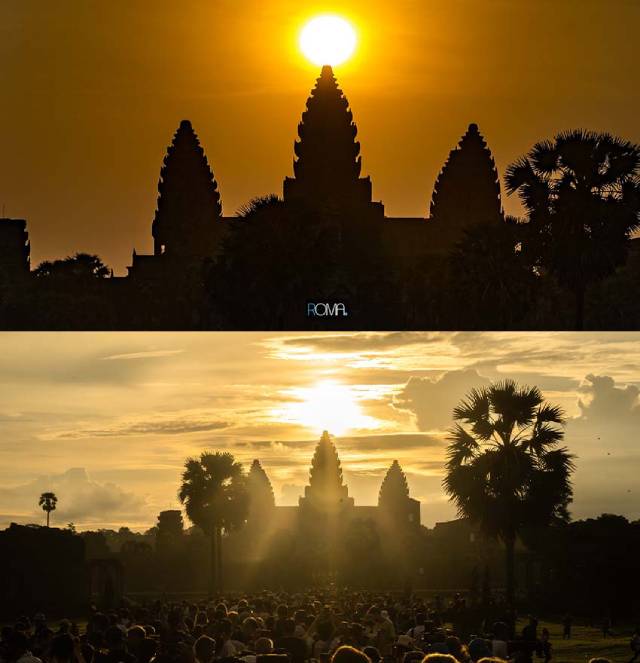 The Angkor Wat Equinox. Photo_ Roma Lim Facebook
The Angkor Wat Equinox. Photo_ Roma Lim Facebook
“In the dry season, the Angkor Wat equinox happens in March. The golden scenery can be seen clearly with the golden sunlight reflecting to the temple,” Roma said.
However, the view may be blocked by clouds during the rainy season in September. Photographers and tourists may have to wait for five days in a row to see the perfect circle feature on top of the spire.
From his experience, dry season offers golden views of the temple when the sunlight hits the spot, especially the temple’s spire, while the foundation looks brown or grey.
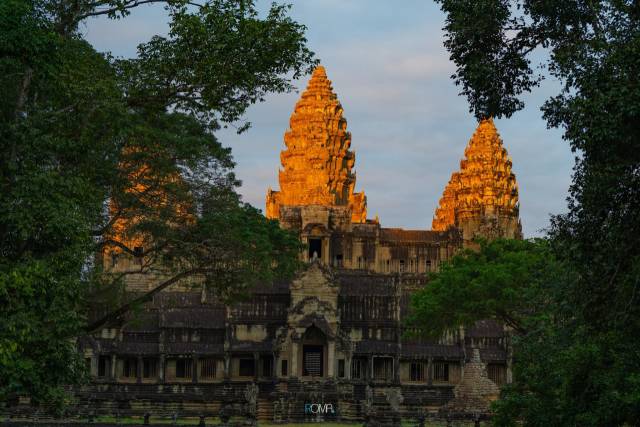 The sunlight makes the Angkor Wat spires look golden during dry season. Photo_ Roma Lim
The sunlight makes the Angkor Wat spires look golden during dry season. Photo_ Roma Lim
Meanwhile, the rainy season gives more greenery views due to the wet grasses and green moss on the rocks.
The sun plays an important role in directing the light on the temples and the whole scenery, Roma said.
 Preah Palilay, located just north of Phimeanakas in Angkor Thom, was covered in green moss during rainy season. Photo_ Roma Lim
Preah Palilay, located just north of Phimeanakas in Angkor Thom, was covered in green moss during rainy season. Photo_ Roma Lim
Searching for cultural lesser-known places
Since June 2023, Roma has been sharing his works for free on the media and with the authorities as needed. Roma would get invited to capture moments in cultural events or programs in Siem Reap province.
The invitation represents recognition for the work, being one of the driving forces for Roma to promote the province.
In Siem Reap province, there are more than the Angkor Wat or Bayon temples, Roma said, adding that he wants to highlight the cultural aspects and more unknown or underrated places.
“I want to travel to rural areas and feature the livelihood of the people there where not many people know and where the locals produce Khmer-made items,” he said.
According to Roma, most tourists only recognized Angkor Wat or the nearby temples when they visited the land. Overlooked places include small temples on Kulen mountain and museums.
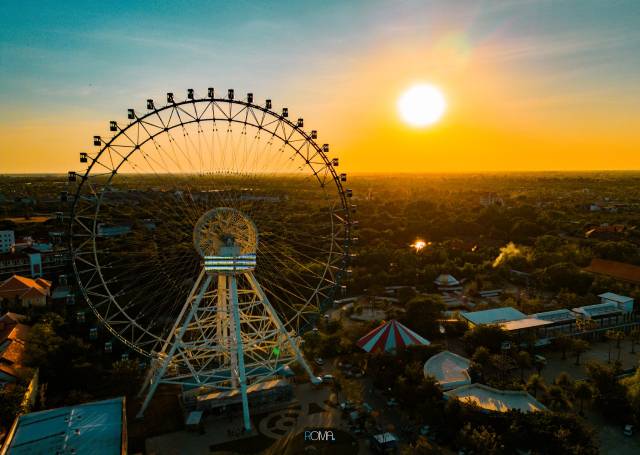 'Sunset dreams come true at the Angkor Eye. An evening painted in warm hues and panoramic beauty.' Photo_ Roma Lim
'Sunset dreams come true at the Angkor Eye. An evening painted in warm hues and panoramic beauty.' Photo_ Roma Lim
“Those places also offer more sights for the tourists but they usually go past. I asked the managers and they said they also used promotional methods on social media and so on but it still does not attract many tourists,” Roma said.
“It’s a pity because the places have so many historical stories and artifacts, we can learn from to know more about the history.”
Inspiration creates more photographic enthusiasm
Born in Kiev, Roma came to Cambodia with his father in 2005 to visit his relatives when he was 10. He liked it in Cambodia, so he asked his father if he could stay.
He lived in Phnom Penh for five years. He had a few trips to Siem Reap and loved the environment there, so he decided to move to the city and has been living there ever since.
He started taking photos of temples four years ago but only started sharing his works actively in 2023 on his Facebook page, Roma Lim.
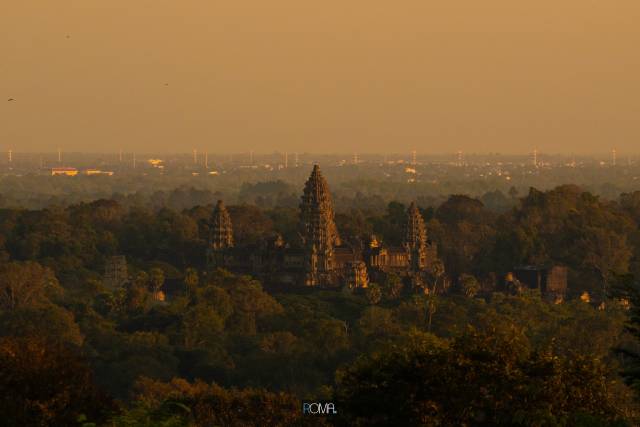 'Phnom Bakheng is the place from which you can witness the sunset and sunrise; moreover, from the top you can see the Angkor Wat temple in the middle of the jungle.' Photo_ Roma Lim
'Phnom Bakheng is the place from which you can witness the sunset and sunrise; moreover, from the top you can see the Angkor Wat temple in the middle of the jungle.' Photo_ Roma Lim
Roma started teaching English language at a private school as soon as he graduated from high school, which was also his major in college. He uses his available time — or makes time — for the photography.
“I would take leave from work so that I have the time for photography. I am trying to spend my annual leaves frugally so that I can save more days off,” Roma said.
He added that his students were inspired by his works and would ask him to share tips on photography.
“I myself also got the inspiration from photographers in Phnom Penh.”








